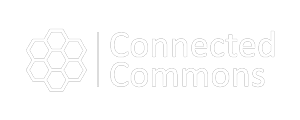 Network Strategy: Elevate Personal Performance and Well-beingStill Sweating the Big Stuff? Microstress Can Harm You Too
Network Strategy: Elevate Personal Performance and Well-beingStill Sweating the Big Stuff? Microstress Can Harm You TooThe Times (London)
Sweating the “small stuff” can take a big toll on your overall well-being. In this interview, authors Rob Cross and Karen Dillon explain why.
Read Article Network Strategy: Elevate Personal Performance and Well-beingThis Specific Kind of Stress Makes Managers Less Effective
Network Strategy: Elevate Personal Performance and Well-beingThis Specific Kind of Stress Makes Managers Less EffectiveFast Company
How you can help your team prevent burnout from the invisible toll of microstress.
Read Article Network Strategy: Elevate Personal Performance and Well-beingInterview With Karen Dillon and Rob Cross
Network Strategy: Elevate Personal Performance and Well-beingInterview With Karen Dillon and Rob CrossMotley Fool
Authors Rob Cross and Karen Dillon explore the concept of microstress in this Motley Fool Live podcast
Read Article Network Strategy: Elevate Personal Performance and Well-beingThey Seem To Have It All But Even High Achievers Can Be Struggling
Network Strategy: Elevate Personal Performance and Well-beingThey Seem To Have It All But Even High Achievers Can Be StrugglingThe Times (London)
New research by Rob Cross and Karen Dillon explains the hidden stresses that are breaking even high performers down.
Read Article Network Strategy: Elevate Personal Performance and Well-beingThere’s a kind of stress our brains don’t notice—and it’s burning us out
Network Strategy: Elevate Personal Performance and Well-beingThere’s a kind of stress our brains don’t notice—and it’s burning us outQuartz
How do we cope with the stealthiest of stresses—microstress? We can start by being able to recognize them in our days. Then fight back.
Read Article Network Strategy: Elevate Personal Performance and Well-beingCombating the ‘Microstress’ That Causes Burnout
Network Strategy: Elevate Personal Performance and Well-beingCombating the ‘Microstress’ That Causes BurnoutThe Wall Street Journal
How to fight back against the stresses that happen in such brief moments that we barely notice them, but are cumulatively grinding us down.
Read Article Network Strategy: Elevate Personal Performance and Well-beingTo be a Happier, More Successful Person, Get Off the “Hedonic Treadmill
Network Strategy: Elevate Personal Performance and Well-beingTo be a Happier, More Successful Person, Get Off the “Hedonic TreadmillBig Think
A handful of people in our research seem to manage and rise above microstress better than the rest of us — a group we began to call the “Ten Percenters.” One of the things the Ten Percenters have in common is their ability to find purpose in small moments in their work and personal lives.
Read Article
 Rob Cross has studied the underlying network dynamics of effective organizations and the collaborative practices of high performers for more than 20 years. Through research and writing, speaking and consulting, and courses and tools, Rob’s network strategies are transforming the way people lead, work and live in a hyper-connected world.
Rob Cross has studied the underlying network dynamics of effective organizations and the collaborative practices of high performers for more than 20 years. Through research and writing, speaking and consulting, and courses and tools, Rob’s network strategies are transforming the way people lead, work and live in a hyper-connected world.